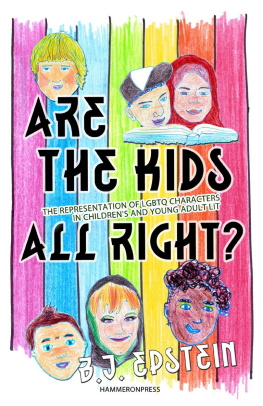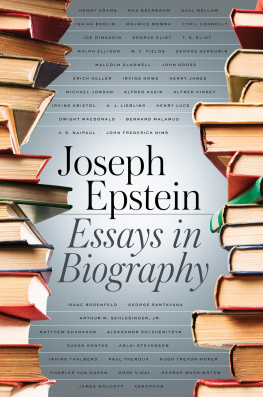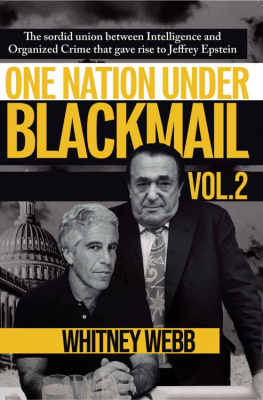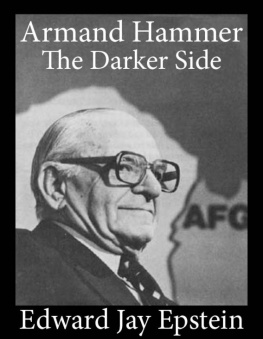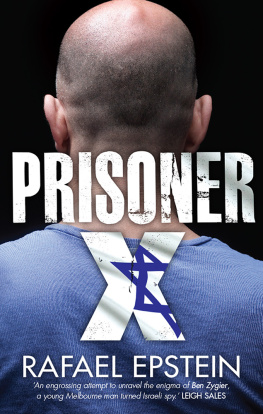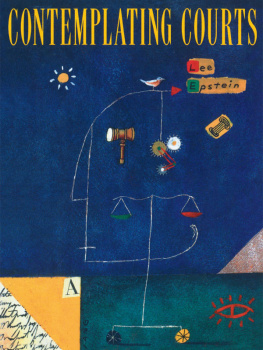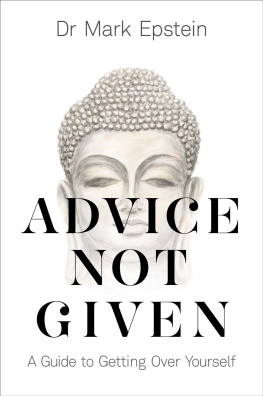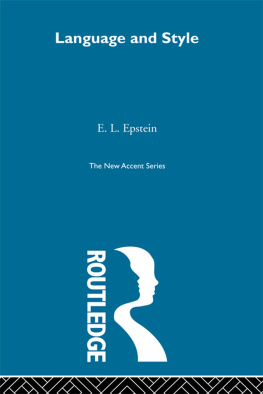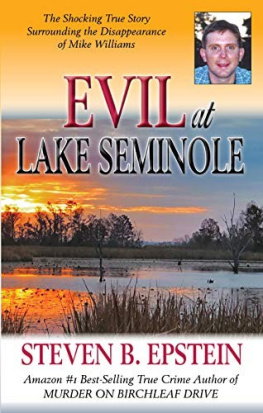Are the Kids All Right? Representations of LGBTQ Characters in Childrens and Young Adult Literature
Copyright B.J. Epstein 2015
The right of B.J. Epstein to be identified as the Author of this work has been asserted in accordance with the Copyright, Designs and Patent Act 1988
No part of this book may be used or reproduced in any manner without written permission from the publisher, except in the context of reviews.
ISBN 978-0-9564507-9-1
Are the Kids All Right? Representations of LGBTQ Characters in Childrens and Young Adult Literature / B.J. Epstein
1. Literary Criticism. 2. Lesbian, Gay, Bisexual, Transgender and Queer. 3. Childrens and Young Adult Literature. 4. Cultural Studies.
First published as EPUB 2015 by
HammerOn Press, Bristol, UK
www.hammeronpress.net
Cover design and typesetting by Eva Megias www.laneutral.com
Cover font Depalo Sans by Alex Camacho www.alexcamacho.es
Set in Adobe Caslon Pro and Franklin Gothic Medium
This book is dedicated with much love and gratitude to the two most important people in my life: my mother, Paula Epstein, and my wife, Fi Woodley. Their support and encouragement have meant so much to me, and I wouldnt be where I am today without them. I love you both very much. Thank you for being who you are.
Acknowledgements
I would like to gratefully acknowledge the help and support of a number of people. Without them, this book would not have been possible.
First of all, the undergraduate students in my courses in childrens literature and queer literature at the University of East Anglia have inspired me with their passion, enthusiasm, and curiosity. I have really enjoyed all our seminars and have found that they have given me new ideas to think about. These students, along with many other people especially those who are LGBTQ and/or readers of books for children and young adults have been willing to tell me what literature means to them, what role it plays in their lives, and, in particular, why LGBTQ lit matters. In many cases, such discussions took place at lectures, workshops, conferences, or reading groups, or during informal chats, and sometimes I did not even have a chance to get peoples names. So I am very grateful to everyone who has been disposed to discuss this with me, whatever the setting.
Several of the authors whose work I discuss here were gracious enough to answer questions and to tell me about their experiences as writers of LGBTQ literature for young people. Many, many thanks to Marcus Ewert, Elizabeth Kushner, and Lesla Newman for their books and for their help.
At HammerOn, Debi Withers has been very encouraging and helpful. Her editorial suggestions have strengthened the book and I appreciate the way she believed in me and the subject matter. I would also like to thank Eva Megias for her vibrant cover design.
Finally, I offer huge thanks and much love to my family, especially my mother, Paula Epstein, and my wife, Fi Woodley. It is in large part due to my family that this particular kid turned out all right.
Thank you all.
Introduction
In this book, I explore how lesbian, gay, bisexual, transgender, and otherwise queer (LGBTQ) people are depicted in books for children and young adults. I approach this topic from several angles, as will be discussed below, with the overarching aim being to understand what messages about and views of LGBTQ people are offered to young readers and why this matters. I believe that writing both creative writing and critical writing can be powerful and activist and that it can contest peoples ideas and potentially even change their lives. My question is whether creative writing that features LGBTQ characters challenges or confirms ideas about gender and sexuality, and my hope is to use my own critical writing in a challenging, helpful, and potentially subversive way.
In this chapter, then, I give background on childrens literature and on sexuality in books for younger readers, and I set out what I plan to do in this book and why.
Motivation
First, it is important to understand what is at stake in a book such as this one, as writing is not only or even primarily an academic act but also a political one. There are a number of reasons why I have chosen to write a book on this topic. A basic one, of course, is that I wonder what children are being told about the LGBTQ community, non-heterosexualities, and non-cisgendered identities through the books they read and whether and how this might reflect the greater society in which they live. Literature says something about the society it is about and in which it is written, edited, published, sold, taught, translated, and read, so what children read is a topic of vital importance because the ideas they get from books and, of course, from other media will shape them and their larger culture in the future.
Another reason why this book is needed now is that though recent years have seen an increase in research into both childrens literature and queer studies, there has been little overlap of this research. While some of the newest research in the field of childrens literature looks at the issue of diversity in childrens books (see, for example, Gopalakrishnan, 2011, or chapter 6 in Travers and Travers, 2008), often this is in terms of race and religion and sometimes ability, but not sexuality. Barbara E.Travers and John F. Travers cover the topic of sexuality in only one page (2008:287). Gender is mentioned more often (such as Seth Lerers analysis of books for boys versus books for girls, 2008), but sexuality still seems to be somewhat taboo. If sexuality is not studied much, then diverse forms of sexuality have certainly been rarely discussed (one of the few earlier examples is Weisbard, 2001), although this is starting to change, with new works that are wide-ranging collections of essays on gender and/or sexuality, such as Michael Cart and Christine A. Jenkins s The Heart Has Its Reasons (2006) or Over the Rainbow, edited by Michelle Ann Abate and Kenneth Kidd (2011). I have not found a monograph that is an in-depth analysis of non-norm sexuality and gender in childrens books. As in any field, it is important to keep up with the latest developments, and for childrens literature, publishers are now producing more diverse books; critics and academics therefore ought to explore these texts.
I personally believe that what the next generation learns is an extremely important and essential topic. I also am concerned about the increased numbers of LGBTQ young people who are being bullied and who, in response to such pressure, self-harm or even commit suicide. Thus, I feel that we need to understand what children and young adults are taught about queer topics or about being queer and how this might impact upon their lives and their routes to adulthood. This means, then, that this book is needed in order to explore how non-norm sexualities and gender identities seem to be understood in contemporary, English-speaking cultures today (see the section below on the corpus of texts for the reasons behind this focus), and what children and young adults are told about queer issues through the medium of fiction.


